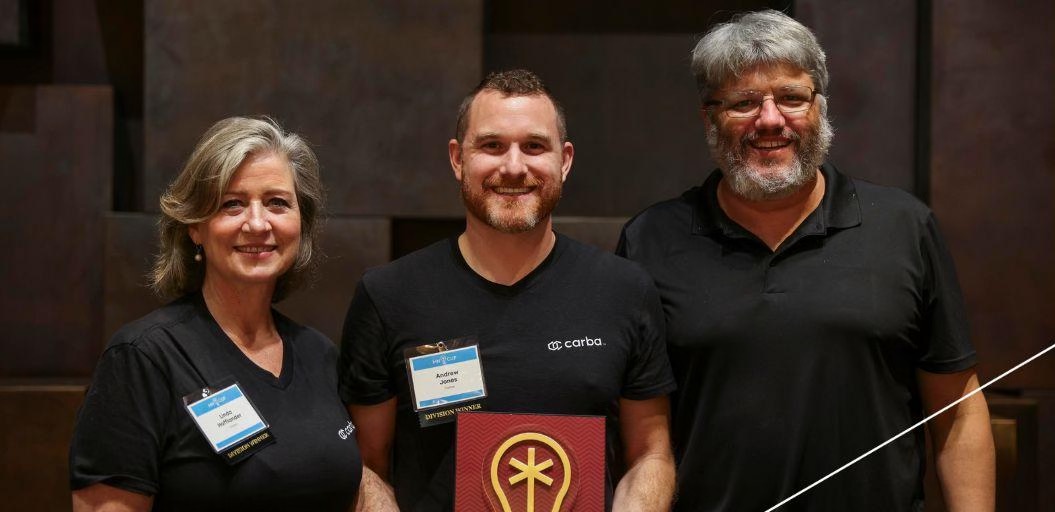A Q&A with Andrew, Linda and Paul of Carba
Carbon removal solutions are on the rise. We’ve moved beyond DAC to include many methodologies including ocean fertilization, soil carbon sequestration, enhanced mineralization, afforestation and reforestation just to name a few. But, expensive, low-volume carbon dioxide removal (CDR) won’t get us where we need to be by 2030. We need low-energy technology solutions that remove carbon permanently and scale exponentially. That’s why we’re excited to support Carba.
Carba is a new type of biomass carbon removal and storage solution that utilizes advances in modeling, design, and monitoring equipment, to develop a truly modular reactor system. Their Biomass Torrefaction and Burial™ (BTB™) process collects carbon dioxide directly from plant waste, converts the plant waste to a recalcitrant solid carbon, and sequesters the carbon underground for thousands of years. This methodology improves performance, efficiency and reduces cost, all critical for the ability to scale carbon removal.
A co-benefit to this technology is their biomass input (i.e. woodchips, yard waste, agricultural waste and more). When biomass waste biodegrades, up to half of the carbon is converted into methane, which carries 28 times the greenhouse warming potential. Instead of burning or letting this biomass biodegrade, Carba can convert it and sequester that carbon underground. Better for biomass waste partners and better for the world!
What has been the biggest challenge for your method of CDR in really taking off?
Linda: It has been incredibly exciting to be at the forefront of carbon dioxide removal. Carba’s methodology is innovative, new, and scientifically proven, but the market for carbon removal is nascent and can be slow to adapt.
There is a lot of work to do to build trust in the marketplace for carbon removal, in general, and in new methodologies, in particular. There are only a handful of registries/verifiers, and they are swamped with a myriad of new techniques, market confusion, need for education, and general distrust due to earlier failures in nature-based offsets.
Working through the process to create a third-party certified methodology takes a lot of time and effort. All this combined translates into longer timeframes for raising money, creating a methodology that customers trust, scaling up, and ultimately accomplishing our goal of saving the planet!
Can you share more about how your solution is measurable, traceable, and permanent?
Paul: The exciting thing about solid carbon burial is that the measurement, traceability, and permanence are straightforward. Our solid form of carbon is highly stable and incapable of expanding or leaking as there are no gasses or liquids that can expand or flow. Furthermore, the solids can be handled with regular equipment, weighed on truck scales to confirm yields, and visually inspected. All this increases our ability to measure and trace the carbon from the plant to the ground.
Lastly, we know from millions of years of coal storage that aromatic carbon moieties are stable underground for millennia, even close to the surface. Because of this, we can bury in abandoned mines, pits, and landfills where it is relatively easy to inspect and ensure that the carbon remains put.
How and why did the founding team become so passionate about CDR and saving the planet?
Andrew: Prof. Paul Dauenhauer and I have spent our careers solving problems related to the energy transition. We met in 2005, in the Chemical Engineering laboratory of Lanny Shmidt at the University of Minnesota, Twin Cities, where Paul, a PhD student at the time, was studying the catalytic pyrolysis of plants to make H 2 , fuels, and commodity chemicals. Paul and I have spent the last two decades working on sustainable fuels, energy and biomass-derived ingredients.
Carbon removal has always been ‘top of mind’ for me after taking a course at UC Berkeley on the subject in 2012. It wasn’t until 3 years ago that I felt the market was ready to embrace a new technology, one that offered both environmental and economic benefits, so Paul and I formed Carba to address this need.
We started with a blank slate and asked ourselves the question, “how can we sustainably and permanently remove a trillion tons of CO 2 with low energy and low cost, without unintended negative consequences.” Combining nature-based carbon removal with superior reactor engineering and an undeniably permanent and safe sequestration process was our answer. Thus, Carba was born.
